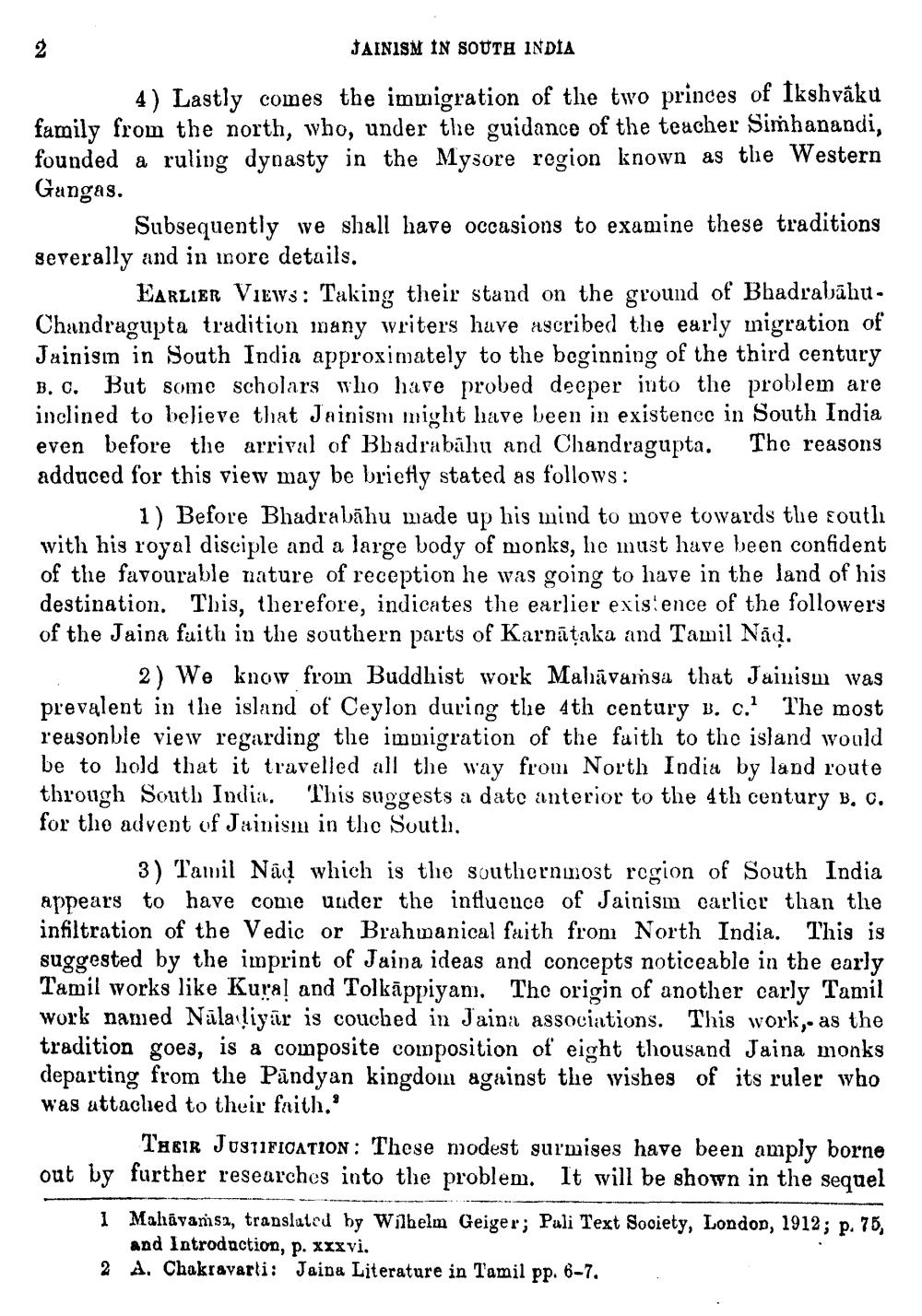________________
JAINISM IN SOUTH INDIA
4) Lastly comes the immigration of the two princes of Ikshvāku family from the north, who, under the guidance of the teacher Simhanandi, founded a ruling dynasty in the Mysore region known as the Western Gangas.
Subsequently we shall have occasions to examine these traditions sererally and in inore details.
Earlier Views: Taking their stand on the ground of BhadrabāhuChandragupta tradition many writers have ascribed the early migration of Jainisın in South India approximately to the beginning of the third century B. C. But some scholars who have probed deeper into the problem are inclined to believe that Jainism might have been in existence in South India even before the arrival of Bhadrabāhu and Chandragupta. The reasons adduced for this view may be briefly stated as follows:
1) Before Bhadrabāhu made up his mind to move towards the south with his royal disciple and a large body of monks, he must have been confident of the favourable nature of reception he was going to have in the land of his destination. This, therefore, indicates the earlier existence of the followers of the Jaina fuith in the southern parts of Karnāțaka and Tamil Näd.
2) We know from Buddhist work Malāvanga that Jainism was prevalent in the island of Ceylon during the 4th century v. c. The most reasonble view regarding the immigration of the faith to the island would be to hold that it travelled all the way from North India by land route through South India. This suggests a date anterior to the 4th century b, c, for the advent of Jainism in the Soutlı.
3) Tamil Nad which is the southernmost region of South India appears to have come under the influence of Jainism earlier than the infiltration of the Vedic or Brahmanical faith from North India. This is suggested by the imprint of Jaina ideas and concepts noticeable in the early Tamil works like Kural and Tolkāppiyan. The origin of another carly Tamil work named Nāla liyar is couched in Jaina associations. This work, as the tradition goes, is a composite composition of eight thousand Jaina monks departing from the Pandyan kingdom against the wishes of its ruler who was attached to their frith.'
Tabir JUSTIFICATION : These modest surmises have been amply borne out by further researches into the problem. It will be shown in the sequel
1 Mahävansa, translated by Wilhelm Geiger; Pali Text Society, London, 1912; p. 75,
and Introduction, p. xxxvi. 2 A. Chakravarti: Jaina Literature in Tamil pp. 6-7.




